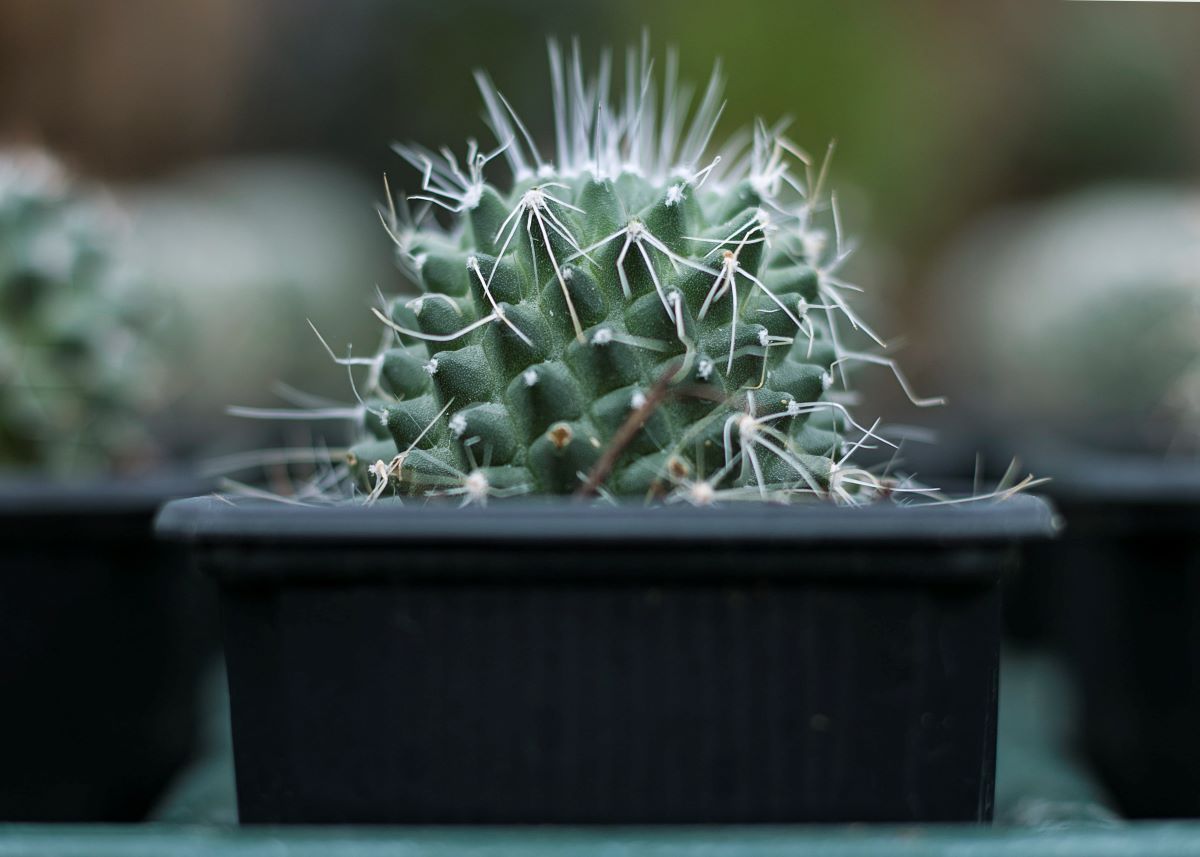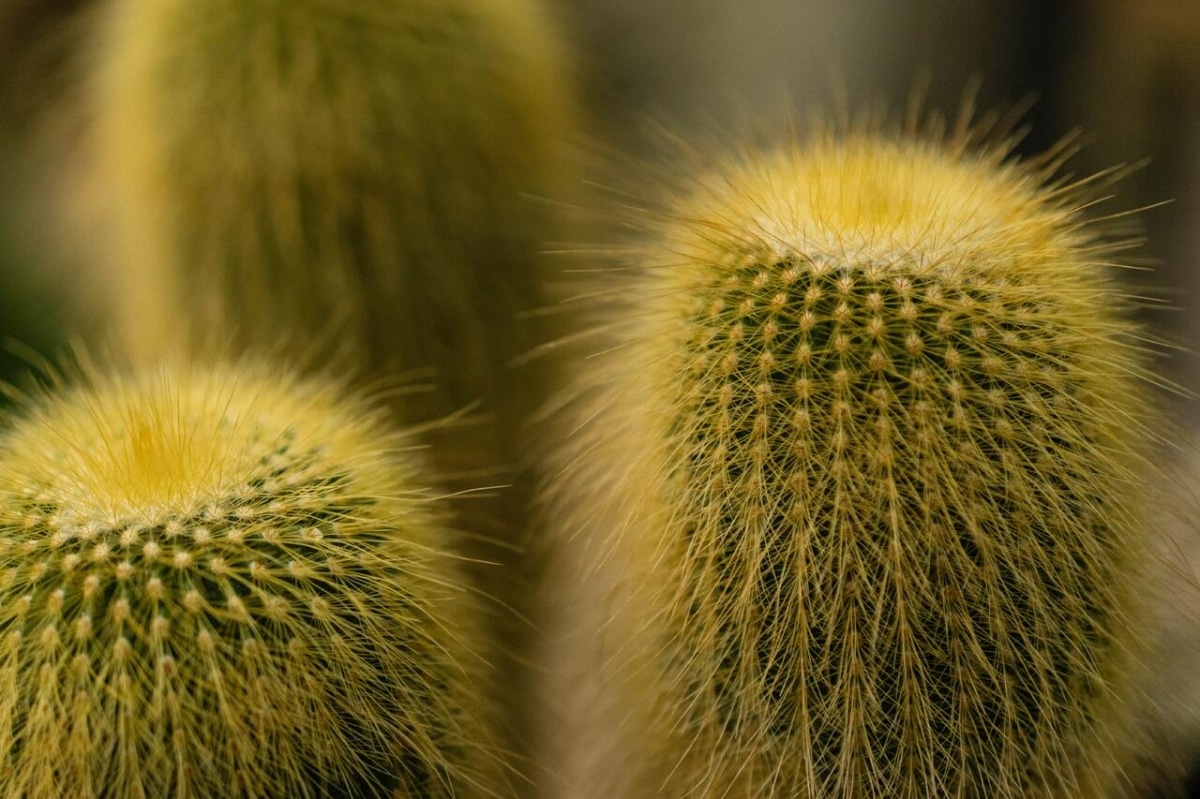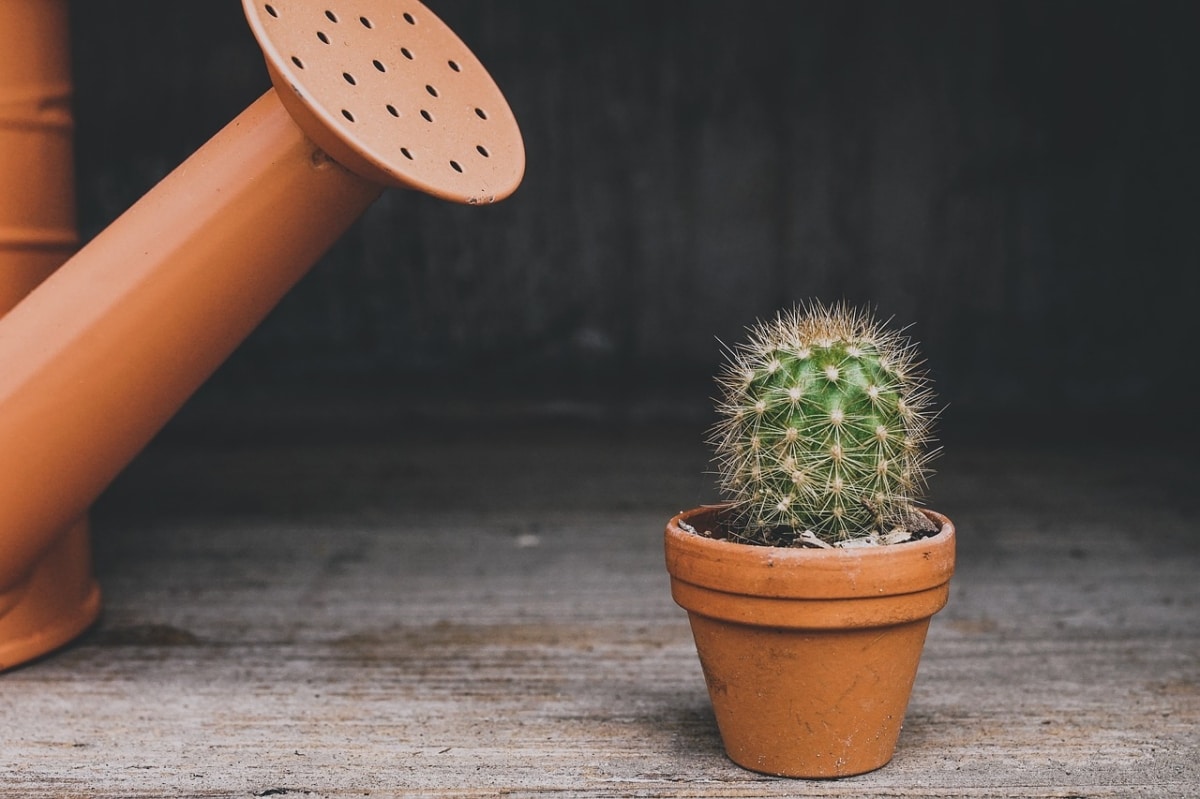
When to transplant cacti? As they say, "there are times for everything", and in the event that our plant begins to need more space to continue growing, it is also important to choose the season of the year in which we are going to do it.
And it is that, yes, they are usually plants that easily overcome transplants, but it would not be positive if they suffered damage, and even less if we can avoid them.
What is the best time to transplant cacti?

From my own experience transplanting cacti of different species and not always at the same time of the year, I can tell you that the best season to carry out this task is spring. But not at any time during that season, but when the temperatures are already higher than they were in winter, and the risk of frost has become non-existent. In fact, Ideally, the thermometer should have been marking a minimum of 15ºC for several weeks.
And it is that if it were done, we are going to assume, just at the end of winter, if it is still cool in your area and/or there are frosts, the plants will notice it and they will suffer. After all, a transplant implies removing them from where they are growing, exposing the roots to the sun, wind, etc.; and since this is something they are not prepared for, by going back underground sooner rather than later the cactus will begin to show damage, such as burns for example.
How to know if a cactus needs a transplant?

Transplanting is something that should be done from time to time if we have cacti in pots, since they are plants that, although they generally grow slowly, over time their roots occupy the entire interior of said container. Once they have rooted well, completely, growth slows down a lot. And from there, two things can happen: the plant stops growing and ends up weakening, or it grows out of the pot (the latter occurs with the globular cacti, such as Ferocactus and some Echinopsis, among others).
The truth is that it is quite sad to see a plant like this, since in order to continue its growth what they do is thin its stem, to the point that, in extreme cases, to save its life, sometimes it is best to cut said stem. where it is thin, impregnate the base with rooting hormones and plant it in a new pot with cactus substrate. Luckily, it is very easy to avoid getting to this, since it is simply a matter of checking them from time to time.
But How can we know that they need a transplant? For this we will have to look at whether:
- roots come out of drainage holes
- if with the naked eye it can already be seen that it has run out of space to grow (for example, if it is a globular cactus, you will no longer be able to see the substrate because the plant has occupied the entire container)
If we still have doubts, I recommend doing the following: Lay the cactus on a table, and with one hand hold the pot and with the other take the plant by the base. And now, what you have to do is take the plant out of the container a bit: if you see that the earthen bread or root ball does not fall apart, then it has rooted well and you can transplant it.
I do this when, for example, it is the case that the earth has been dry for so long that it has compacted. And of course, when compacted it has "detached" from the inside of the pot.
Depending on the quality of said substrate, sometimes it is better to plant the cactus in a new pot with a new and better quality substrate., like this one here, than trying to rehydrate the soil you have, for the simple reason that if this has happened once, that is, if it has been compacted once, it will probably happen again in the future. And of course, it is preferable to put a substrate that is better so that it does not happen again.
Special case: transplanting cacti that have suffered from excess water

In principle, no diseased plant should be transplanted, since in many cases the remedy would be worse than the disease. But if our cactus has received more water than it needs, then things change. In this situations, if we want to have any chance of saving its life, we will have to plant it in a pot with new substrate, in addition to applying systemic fungicide as this to try that the mushrooms do not kill him.
The pots that cacti need are those that have holes in their base, since they do not like anything to have their roots soaked. Also, it would not be a good idea to put these pots inside pots without holes, for the same reason.
This transplant it will be done at any time of the year, but I do recommend that, if we are in winter, you keep the cactus at home until spring so that it can adapt to its new pot.
As you have seen, the transplant is important, yes, but it is also important to do it at the most opportune moment.